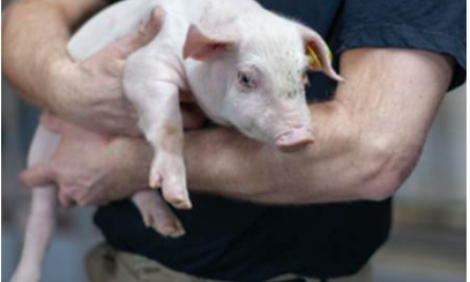



How Much Space Does a Sow Need in a Group-housing System?
Producers need to consider not only the housing capacity of the barn but also the welfare and performance of sows when determining the space allowance for sows, according to Yuzhi Li of the West Central Research and Outreach Center at the University of Minnesota.Gestation stalls have become a controversial issue for the modern swine industry. Pork producers have used gestation stalls for more than 30 years in order to use space and facilities efficiently. By using stalls, producers can also provide individual care to gestating sows. However, due to concerns of the general public about the welfare of sows, gestation stalls have been banned in eight states in the United States through legislative regulations. In addition, Smithfield Food and Maple Leaf, the two largest pork producers in North America, announced to phase out gestation stalls by 2017. The European Union will completely eliminate gestation stalls by 2013.
What happens if a pork producer has to retrofit gestation stalls to group housing? Sows in group housing usually need more space to maintain productivity and well-being because of competition among individual sows. However, more space requirement means low housing capacity of animals or low output per square footage of the housing facility, which consequently results in reduction of profitability. Can a producer maintain the same number of sows when retrofitting gestation stalls into group housing?
To retrofit a barn with typical gestation stalls (22 inches × 7 feet) to group-housing and maintain the same number of sows, space allowance to each sow would be about 16 square feet (Table 1). Now the question is whether 16 square feet is large enough for a sow. To answer the question, we need to know the minimal space requirement of sows in a group-housing system.
| Table 1. Space allowance and housing capacity | |
|---|---|
| Space allowance (ft2/sow) | Housing capacity (%)* |
| 16 | 100 |
| 18 | 92 |
| 20 | 85 |
| 22 | 77 |
| 24 | 69 |
| *Full housing capacity (100%) means the number of sows housed in a barn with standard gestation stalls. | |
The minimal space required by a domesticated animal should be the space that can accommodate the physical size of the animal, allow the animal to change postures, eat, drink and defecate. Space needed to accommodate the physical size of an animal depends on the posture of the animal adopted. Sows spent about 80 per cent of their time lying, and the posture of lying fully on their side (laterally) occupies the largest space than any other postures. Therefore, the minimal space requirement of a sow should allow her to lie fully on her side without overlying on other sows.
Scientists have developed an equation to calculate areas physically occupied by a pig at different postures: A = k W0.66, where A is area in m2, and W is live weight in kg. From standing to lying, the k value varies from 0.019 to 0.047. To allow pigs to lie fully on their side with legs extended, the area needed is: A = 0.047 WW0.66. Pigs also need to move between lying and standing or vice versa. Space needed for these posture changes can be estimated by the equation of A = 0.046 WW0.66, which is very close to the space needed for lying fully on its side. So it might be reasonable to estimate minimal space requirement of gestating sows by using the equation of A = 0.047 WW0.66 (Table 2).
Since space requirement of a sow changes with floor type, thermal environment, group size, and management protocol, these factors should be taken into account when retrofitting gestation stalls into group housing. The allometric equation above can only be considered as a guideline to estimate the minimal space requirement of gestating sows.
| Table 2. Sow weight and space requirement | |
|---|---|
| Space weight (lb) | Space requirement (ft2)* |
| 350 | 15 |
| 400 | 16 |
| 450 | 18 |
| 500 | 19 |
| 550 | 20 |
| 600 | 21 |
| 650 | 22 |
| 700 | 24 |
| *Calculated by using the equation: A = kW0.66, where A is area in m2, W is live weight in kg, and k=0.047 | |
The EU standard of space requirement in group-gestation housing is 24 square feet for a mature sow, and 18 square feet for a gilt. Compared with the EU, Australia has lower standard, requesting 15 square feet of floor space per sow or gilt. Currently in the United States, there are no mandatory standards of space requirement for gestating sows. The minimal space allowance used in the swine industry has been 16 square feet per sow.
Limited space allowance may comprise sow welfare, such as increased skin lesions and poor immunity. So when determining space allowance to sows in group-housing systems, producers should consider not only the housing capacity of the barn, but also welfare and performance of sows.
August 2012








